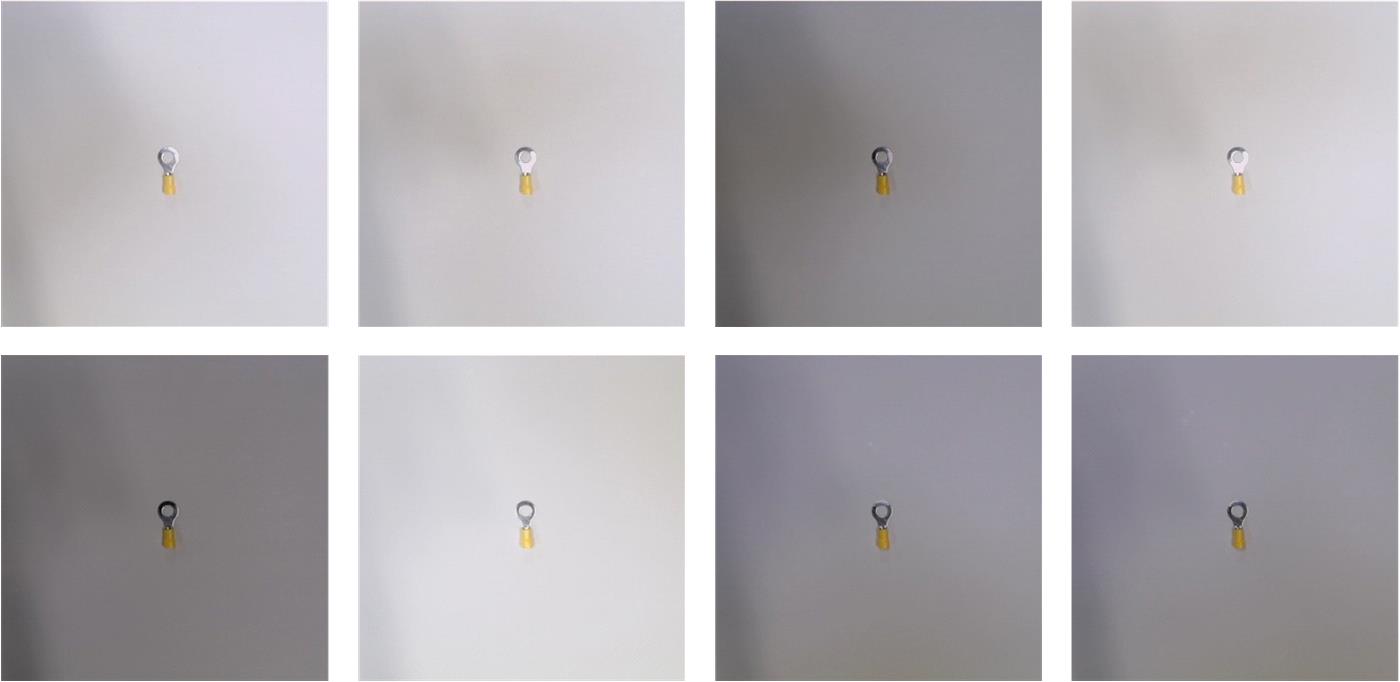SPRADC9 july 2023 AM62A1-Q1 , AM62A3 , AM62A7
2.2 Data Collection
Four classes are used to train the model: Good (accepted) and three classes of defects including Half Ring, No Plastic, No Ring. Figure 2-2 shows examples of the four classes. The images in the figure are cropped for clarity purposes. The four classes here are selected for demo purposes.
 Figure 2-2 Examples of Pictures From the
Four Classes (the pictures are cropped for clarity purposes)
Figure 2-2 Examples of Pictures From the
Four Classes (the pictures are cropped for clarity purposes)A custom data collection protocol is followed to simplify the image capturing and annotation. The pictures are taken with top view angel and the camera is positioned at a height that is approximate to the height expected in the actual demo setup. The pictures are captured with a resolution of 720x720. 100 pictures were taken for each class (total 400 pictures). Only one sample is used in the 100 pictures for each class. The samples are positioned at the same orientation while the lighting condition is changed for each picture. This setup helps in the annotation of the pictures where the annotation (bounding box and class label) can be copied between pictures of the same class. In the same time, it provides a comprehensive set of pictures which cover various lighting conditions. While all objects are positioned in one place in the picture, the model can generalize to other areas of the picture. Figure 2-3 shows samples of the pictures captured for the good class.
 Figure 2-3 Samples of Pictures Captured
for the Good Class (the pictures are captured at 720x720 resolution)
Figure 2-3 Samples of Pictures Captured
for the Good Class (the pictures are captured at 720x720 resolution)